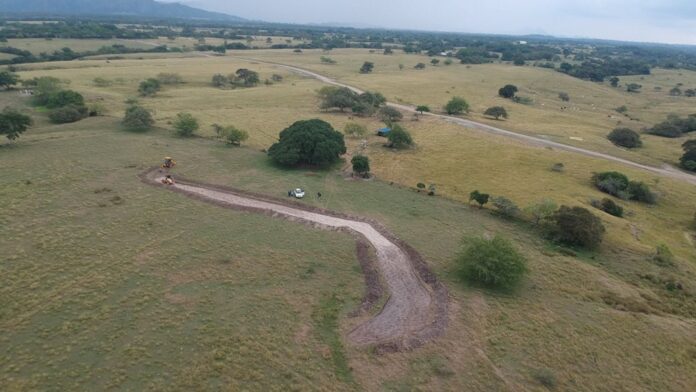## Beyond the Banana Trees: How Colombia Birthed a Literary Giant Gabriel García Márquez’s “One Hundred Years of Solitude” isn’t just a novel; it’s a sprawling, magical tapestry woven from the very fabric of Colombia. This iconic masterpiece, steeped in the country’s history, myths, and profound sense of place, took root in the fertile soil of García Márquez’s Colombian upbringing. Today, we journey to the heart of this literary landscape, exploring how the unique spirit of Colombia shaped the creation of one of the 20th century’s most celebrated novels. From the bustling streets of Aracataca to the whispers of forgotten legends, we’ll unravel the stories behind the stories, revealing the Colombian soul that breathes life into “One Hundred Years of Solitude.”
Building a Dream: How “One Hundred Years of Solitude” Transformed Colombia
The Search for Macondo: A Journey Across Colombian Landscapes

Early on in their acclaimed TV series adaptation of Gabriel García Márquez’s “One Hundred Years of Solitude,” Netflix and Bogota-based producer Dynamo (“Narcos”) set out to find Macondo. First, writers, producers and location managers visited Aracataca, the Nobel Prize winner’s birthplace on Colombia’s Caribbean seaboard. Later they toured Colombia’s Guajira peninsula, its Pacific Coast and Ciénega Grande swamp, capital Bogota’s province and Tolima in the high Andes. As they had always imagined, they never found Macondo – in the sense of one single village which could easily be readapted into the iconic magical realism setting. The idea, however, from the very beginning was to build Macondo from scratch.
Those fam trips, however, left multiple options to be considered. Most of the action of “One Hundred Years of Solitude” – the novel and series – in reality takes place in a relatively small strip of territory in Colombia’s far Caribbean north. Directed by Alex García and Laura Mora, the series’ story begins in a ranchería – a traditional village somewhere on the plains outside Riohacha on Colombia’s Caribbean coast. It then crosses the soaring Sierra Nevada de Santa Marta and remains for most of the rest of Season 1 in Macondo north-west of the Sierra, in the Ciénaga Grande, but so near to the Caribbean Sea that the later discovery of its proximity breaks Macondo founder José Arcadio Buendía’s spirit. In contrast, the series’ locations range from Guajira in the north to Alvarado, Tolima, in central Colombia’s Andes. Reasons for that range explain very much the locations of “One Hundred Years of Solitude.”
Macondo: A Monument to Collaboration and Colombian Talent
Macondo couldn’t be any old place, however. Locations are very much a matter of logistics. “The biggest challenge was to find locations that were visually incredible but also practicable,” says Macondo location manager, Cristiano D. Toro. “One request I made was that Macondo had to be near an airport. But most importantly, we’re a very large production. If I have problems with crew, cameras, for example, we needed to be able to move easily, and given our long shooting days, it’s always best to have Bogotá near,” recalls Carolina Caicedo, executive producer of “One Hundred Years of Solitude.”
Macondo also wouldn’t be built quite from scratch. In a drive for authenticity, art director Eugenio Caballero requested any Macondo to have high mountains behind and be built around a real-life big tree which would end up at the center of Macondo’s square. And it couldn’t be any tree either. It needed to allow enough space between it and key buildings such the school and church, and catch sunrise light one side and evening sun on the other, remembers Emerson Espinosa, also “One Hundred Years of Solitude” location manager. A large caucho cartagénero was found on the Arizona ranch, vast green pastures outside Alvarado, less than an hour’s drive from Tolima capital Ibagúe, itself an hour’s flight to Bogotá. Colombia’s real life steep-backed Western Andes rise behind Alvarado. Topping them in the series are the snow capped peaks of Sierra Nevada de la Marta, added by VFX.
Macondo – its backlot site for the two biggest sets at least, including the biggest, capturing Macondo in its largest splendor from EP. 4 to Ep. 6 in Season 1 – had been found. It began here: A caucho tree in a field, around which Macondo’s most expansive version was built. Courtesy of Dynamo
Beyond the Screen: “One Hundred Years of Solitude” & its Economic Impact
The news that “One Hundred Years of Solitude,” Netflix’s most ambitious series in Latin America, injected more than $52 million (225 billion Colombian Pesos) into the Colombian economy is gratifying for the thousands of locals who contributed to its making. The reported amount accounts for both direct expenses and the broader ripple effects across the supply chain. Led by Colombian powerhouse producer Dynamo (“Narcos”), the two-part Spanish-language series about the Buendía family employed some 900 mostly Colombian crew members, 150 artisans, thousands of extras and worked with more than 850 suppliers for the construction of the mythical town of Macondo from scratch. Season One of “One Hundred Years of Solitude” led to the booking of more than 100,000 hotel nights in the town of Ibagué during the filming process. Indeed, this series adaptation of Nobel Literary Prize-winner Gabriel García Márquez’s 1967 magnum opus solidifies Colombia’s position as a premier destination for international productions, underscoring the diversity of its landscapes, exceptional talent and top-tier services.
Conclusion
As we delve into the creation of Gabriel García Márquez’s iconic novel, “One Hundred Years of Solitude”, it becomes clear that the book’s intricate web of stories, characters, and events was masterfully crafted in the rich cultural landscape of Colombia. From the inspiration drawn from the author’s own family history to the meticulous attention to detail in weaving together myth, folklore, and historical events, the article reveals the depth of García Márquez’s creative process. By exploring the author’s use of magical realism and his exploration of themes such as love, family, and the cyclical nature of time, we gain a deeper understanding of the novel’s enduring appeal and its continued relevance in today’s literary landscape.
The significance of “One Hundred Years of Solitude” extends far beyond its literary merit, as it has become a symbol of Colombian culture and identity. The novel’s exploration of the country’s complex history, from the colonial era to the 20th century, serves as a powerful reminder of the importance of preserving cultural heritage and the need for continued dialogue and understanding between different cultures. As we look to the future, it is clear that the novel’s impact will only continue to grow, inspiring new generations of writers, artists, and scholars to explore the rich cultural tapestry of Colombia and beyond.

